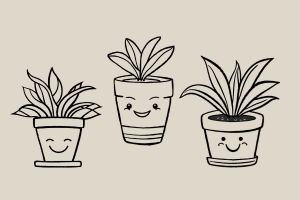
Mastering the Art of Repotting Root-Bound Houseplants for Thriving Indoor Gardens
Understanding Root-Bound Houseplants
When a houseplant outgrows its container, its roots become tightly packed, circling the bottom of the pot. This condition is known as being root-bound. Recognizing the signs of a root-bound plant is crucial for its overall health and growth.
Signs of a Root-Bound Houseplant
1. Slow or stunted growth 2. Roots circling the pot's bottom 3. Water running straight through the pot 4. Pot tipping over due to root mass
Best Practices for Repotting
1. Choose the Right Time: Spring is generally the best time to repot houseplants when they are actively growing. 2. Select a New Pot: Pick a pot that is 1-2 inches larger in diameter than the current one and has drainage holes. 3. Prepare the Plant: Water the plant a day before repotting to ease root removal. 4. Gently Loosen Roots: Carefully loosen the roots to encourage outward growth and trim any dead or circling roots. 5. Add Fresh Potting Mix: Place a layer of soil in the new pot, position the plant, and fill the gaps with fresh potting mix. 6. Water and Monitor: After repotting, water the plant thoroughly and place it in a suitable spot with adequate light.
Post-Repotting Care
1. Avoid Overwatering: Allow the plant to adjust to its new environment before resuming regular watering. 2. Provide Adequate Light: Place the repotted plant in a location that suits its light requirements. 3. Monitor Growth: Keep an eye on the plant for the next few weeks to ensure it adapts well to its new pot.
Conclusion
Repotting a root-bound houseplant is a beneficial practice that promotes healthy growth and vitality. By following the correct techniques and providing post-repotting care, you can help your plants thrive in their new environment.